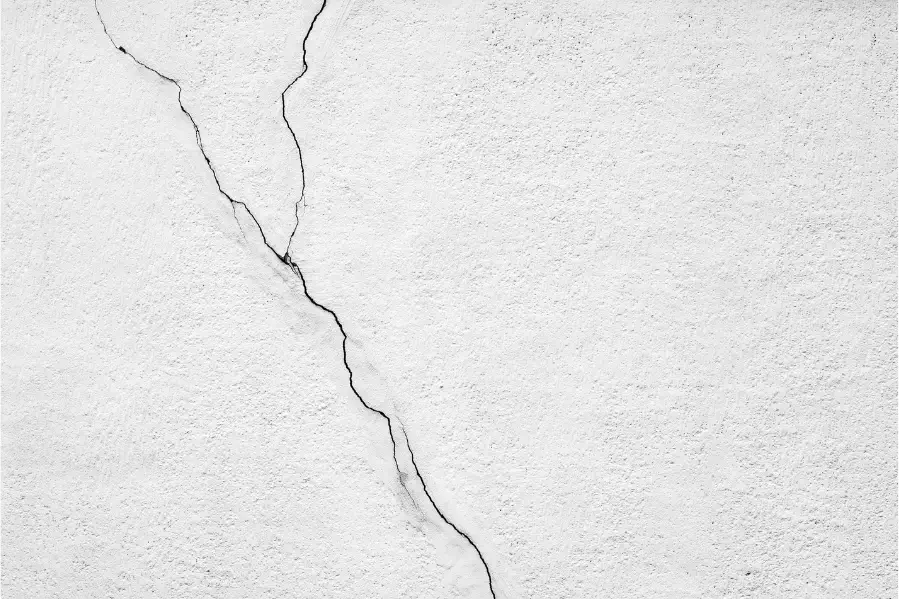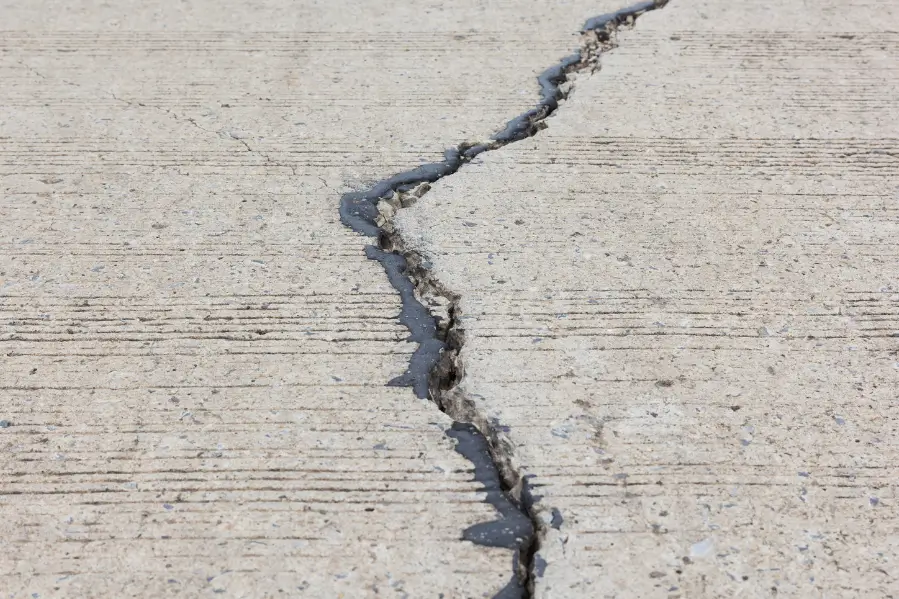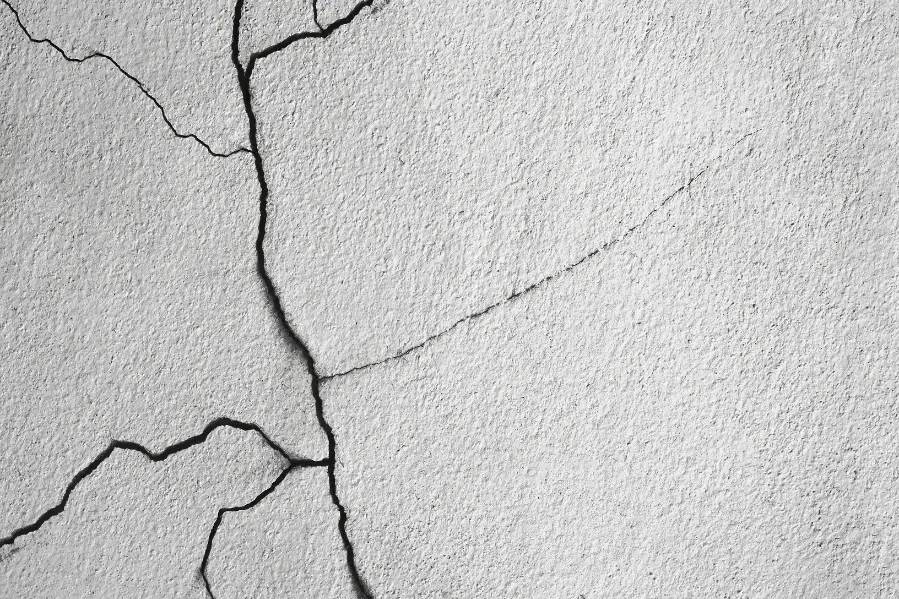Concrete is a fundamental material in modern construction because it offers the structural integrity required for various applications. Although it is highly durable, the weathering process and time can cause cracks in concrete.
These cracks threaten the structural integrity and require expensive repairs if ignored. And if these cracks remain unnoticed, they may worsen. They can also impair the appearance and stability of your property. It’s crucial to fix these cracks right away.
Repairing a crack in concrete involves a few steps to ensure a durable and seamless fix for a long time. You can restore both narrow and wide concrete fractures with the help of this guide’s straightforward, step-by-step instructions by following it.
Understanding Concrete Damage: Types and Resulting Cracks
You must understand the types of damage and their resulting cracks for effective repair and maintenance to ensure the longevity and safety of concrete structures.
Concrete Damages
Here are types of concrete damages given below:
1. Structural Damage
Concrete cracks may result from leveling concerns, such as typical endings, or more significant issues, like defective foundations. Continuous cracks in vertical walls indicate possible structural damage.
2. Chemical Damage
Concrete may crack over time due to a variety of chemical interactions:
- Carbonation: When concrete comes into contact with carbon dioxide, it becomes carbonated, lowering its pH and strength.
- Sulfates: Sulfates in groundwater or soil can destroy concrete if left unchecked.
- Alkali-Silica Reactions: Interactions between alkali and silica within the concrete can lead to cracking.
- Chloride Ions: Corrosion from chloride ions can cause concrete to crack, split, and ultimately lead to structural failure.
Types of Cracks and Their Repair
There are two types of concrete cracks.
1. Small Cracks (Narrow Cracks)
Width: Less than 1/4 inch wide.
Repair Method: Use liquid filler or concrete caulk to seal the cracks. These materials offer a strong barrier against moisture and further cracking and are simple to apply.
2. Large Cracks (Wide Cracks)
Width: More than 1/4 inch wide.
Repair Method: Use concrete patching compound to repair the cracks. The compound is mixed with water to create a grout-like texture and applied with a trowel. It can be smoothed and textured to match the surrounding area.
However, the patch’s color will appear like fresh concrete and might not blend in with the original. To completely conceal the patch, it is recommended to paint the surface with the appropriate concrete paint.
Step-by-Step Guide to Repair Concrete Cracks
Repairing concrete cracks involves several crucial steps to ensure a durable and seamless fix. This guide provides detailed instructions for addressing both narrow and wide cracks.
Required Equipment and Materials
Equipment
- Wire- or stiff-bristle brush
- Chisel and hammer
- Trowel
- Caulking gun (if using a tube filler)
- Putty knife, broad knife
- Vacuum or brush
- Screwdriver
- Wire brush
- Gloves and goggles
Materials
- Concrete crack filler
- Epoxy or latex agent
- Sand
- Sealant
- Paint
- Vinyl concrete compound
- Concrete bonding adhesive (optional)
- Foaming material (for deep cracks)
- Concrete caulk or liquid filler
Method 1: Repairing the Narrow Concrete Cracks

This guide offers a thorough method for fixing minor concrete fractures.
Step 1: Clear the Crack
To remove loose debris from minor gaps, use a wire brush. Make sure there is no dust or dirt inside the crack.
Step 2: Use a Filler (Sealant)
Apply rubber filler to stone cracks using an applicator bottle or caulking gun. Adhere to the product’s instructions for the best results.
Step 3: Put in a foam backer rod
If the crack is intense, use a foam backer rod to create a base for the repair material. Using a screwdriver, insert the rod into the crack to a depth of 1/4 inch, ensuring its diameter is slightly more than its length.
Step 4: Fill the Gap
As you apply the repair material to the crack, ensure it is level with the surrounding Surface. Smooth the filler using a trowel or putty knife.
Step 5: Instrument the Surface (if required)
When applying the sealant, use a wet margin trowel or wet flexible putty knife to smooth and level it.
Step 6: Permit the Filler to Harden
As directed by the manufacturer, allow the filler to cure. Throughout the curing process, keep the repair away from moisture and traffic.
Method 2: Repairing the Wide Concrete Cracks

The following guide offers a procedure for fixing large cracks in concrete using multiple materials.
Step 1: Enlarge the Crack
To create an inverted “V” shape, undercut the sides of the crack with a hammer and mortar chisel. Because of its shape, the repair material can better “secret” the crack and make a solid mechanical bond.
Step 2: Clear the Crack
Using a wire brush, clean the cracks of debris. To ensure the crack is clear of dust and other loose particles, clean it with a power washer or a garden pump and spray nozzle.
Step 3: Empty the Crack
To completely clear the crack of all water and debris, use a brush or a wet/dry shop vacuum. Though damp, the surfaces ought to be devoid of any standing water.
Step 4: Blend the Compound
The concrete patching compound should be mixed according to the manufacturer’s instructions. Ensure that the blend is uniform and prepared for use.
Step 5: Close the Gap
To assist the compound in settling deeply into the fracture and remove any air pockets, trowel the mixture into the crack while stabbing the trowel into the mixture. Once the crack is level with the surrounding concrete surface, fill it in.
Step 6: Ensure the smooth patch
Using the trowel, smooth out the patch’s Surface, ensuring the edges match the surrounding concrete. This step is essential to get a soft effect.
Step 7: Surface Texturing (Optional)
If desired, use a dry paintbrush to add texture to the patching compound’s Surface to make the fix less obvious.
Step 8: Allow Compound to Heal
As per the manufacturer’s instructions, allow the compound to cure. Depending on the product being utilized, several hours or perhaps several days may pass during this process.
Step 9: Seal the Surface (Optional)
When the Surface has dried, you can paint or seal it to protect the repair site and the surrounding concrete from moisture and other additional damage.
Repairing Concrete Stairs and Pathways: Preparation and Curing Time
Before beginning to repair concrete steps and pathways, remove any cracked or damaged concrete. Remove loose debris by carefully chipping away with a tiny sledge hammer and chisel.
To provide a stable foundation for the repair, undercut the margins of the damaged region. This is an essential step because it guarantees that the new patch sticks correctly and fixes your pathway or steps in a long-lasting way.
Concrete Curing Time
It takes roughly 28 days to cure concrete completely. The length of the curing period can vary slightly depending on the weather, mixture, and other factors. For every inch of slab thickness, the standard rule of thumb for concrete drying is 28 days.
Your Next Step – Get Help from a Professional
It is essential to seek professional help if the crack shows signs of structural damage or is more comprehensive than 1/4 inch. Deep cracks may indicate fundamental issues that need to be repaired using specific tools.
Call experts if you need professional concrete repair and maintenance services. They specialize in roadway, patio, and sidewalk repairs and can provide dependable solutions personalized to your needs. Their team of skilled professionals can handle minor crack repairs and are more involved in structural work efficiently and effectively.
Recommended Service: Smart Remodeling LLC
For those in Houston, Texas, consider the services of Smart Remodeling LLC. They offer concrete and maintenance repair services and have been recognized with the Best of Houzz Award 2024.
With 14 years of experience in home and commercial remodeling, Smart Remodeling LLC specializes in:
- Roadway repairs
- Patio repairs
- Sidewalk repairs
Smart Remodeling LLC provides reliable and personalized solutions for all your concrete repair needs, ensuring efficient and effective results.
Wrapping Up
Maintaining your property’s structural integrity and appearance by repairing concrete cracks is crucial. Whether dealing with narrow or wide cracks, following the right repair methods ensures long-lasting results and prevents further damage.
For significant cracks or structural damage, seeking professional help is essential. In Houston, Texas, Smart Remodeling LLC offers reliable and expert concrete repair services, ensuring your property remains safe and aesthetically pleasing.
Don’t wait—address concrete cracks promptly to maintain the durability and stability of your structures.






